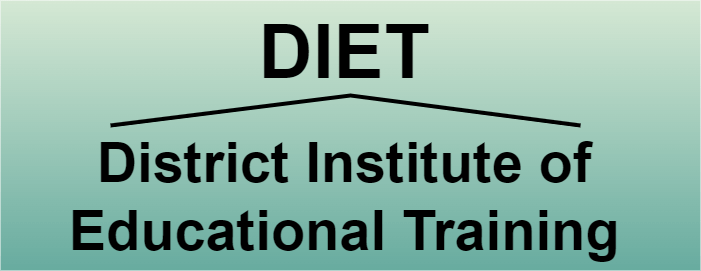What is the Full Form of DIETDIET: District Institute of Educational TrainingDIET stands for District Institute of Educational Training. In India, the District Institute of Education and Training (DIET) comprises various district-level educational institutions, most notably those established in 1988. Under the Education Policy 1986, affiliated institutions were formed in each district of India by the Government of India for the development of education in the nation. These institutions were started in order to seek help in the coordination and implementation of government policies at the district level. DIET has now been given the charge of several other responsibilities. Simply put, DIET was established primarily as a center of guidance for the educational institutions and schools of each district within the country. 
History of DIETDistrict Institutes of Educational Training (DIET) were constructed all over the nation in response to the guidelines of the National Policy of Education (NPE, 1986), which was prepared with the assistance of the then-deceased Prime Minister of India, Shri Rajiv Gandhi. Currently, there are DIETs in more than 500 districts across the nation. When the District Primary Education Program (DPEP) first began, DIETs were crucial in providing teachers and other district and block-level officials with orientation. But with the creation of Block Resource Centres throughout all of the country's districts, DIET's original intent was defeated, and it now just functions as a facility offering B.Ed. and Diplomas in Elementary Education programs. Under the flagship "Sarva Shiksha Abhiyan" scheme of the Indian government, DIETs were expected to provide academic leadership. To that end, each DIET has a suitable number of professor seats available. Planning and Monitoring was one of the departments tasked with taking the initiative in formulating district plans, initially under the auspices of DPEP and later the Sarva Shiksha Abhiyan program. However, in practice, DIET, with the exception of a few states with independent cadres, such as districts in Kerala and Gujarat, could not fulfill the job as intended. At first, DIETs were involved in capacity building, but the kinds of programs they ran were selected at the state level, primarily by the SCERT; therefore, many of the programs they ran weren't necessarily based on teachers' needs. Due to this, over time, DIETs and their programs lost importance, and capacity building was instead left in the hands of Block Resource Centres, which are now the primary organization in charge of delivering capacity building programs, both under the DPEP, Sarva Shiksha Abhiyan, and the recently integrated Samagra Shiksha (Abhiyan) program. Purpose of the District Institute of Educational TrainingThe primary goal of DIETS, the sole institution of its kind at the district level, is to provide training to all relevant personnel. The Education Commission (1964-66) had once said about teachers, "Of all the factors that determine the quality of education... the quality, ability, and character of teachers are without a doubt the most significant". However, these, in turn, rely heavily on the caliber of the assistance and other resources given to them. This is where the role of DIETs comes into play. Prior to the introduction of the NPE, organizations like NCERT, NIEPA, and SCERTs were the main national and state-level providers of this support in the domain of elementary education. The Central Directorate of Adult Education at the federal level and State Resource Centers (SRCs) at the state level were both offering this help in the domain of adult education. Institutions for elementary teacher education existed below the State level, but they mostly focused on pre-service teacher education. Regardless of this limited role, the majority of the institutions' physical, human, and academic resources were insufficient. Additionally, they had the propensity to use teaching methods other than those they advised new instructors to use. There were also some more serious issues, such as outdated study programs. The primary and senior education systems had already become too large for national and State level organizations to fully support them at the time the NPE was adopted. The NPE suggested that their continued growth would also represent a significant qualitative improvement. Decentralized support had to be given to them as a result, which was essential. In order to add a third district-level tier to the support system, the NPE and POA proposed creating District Institutes of Education and Training (DIETs). A Centrally funded Scheme of Restructuring & Reorganization of Teacher Education was authorized in October 1987 in accordance with the guidelines of NPE on teacher education. The establishment of DIETs was one of the Scheme's five elements. Draft instructions for adopting the DIET component were distributed to the States in October 1987 and have served as the foundation for its implementation thus far, along with a few additional circulars. Up until October 1989, 216 DIETs around the nation had received approval for central assistance under the Scheme. As of 2022, there are more than 500 DIETs across the country.
Next TopicFull Form
|
 For Videos Join Our Youtube Channel: Join Now
For Videos Join Our Youtube Channel: Join Now
Feedback
- Send your Feedback to [email protected]
Help Others, Please Share










